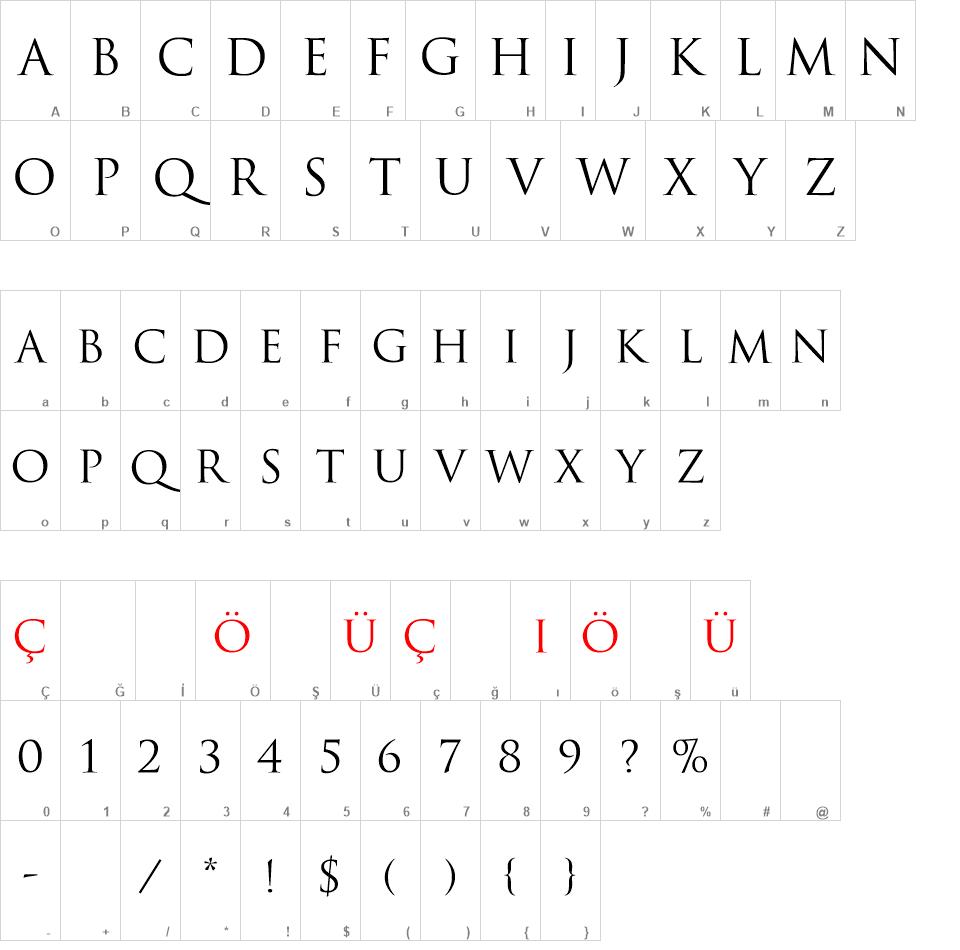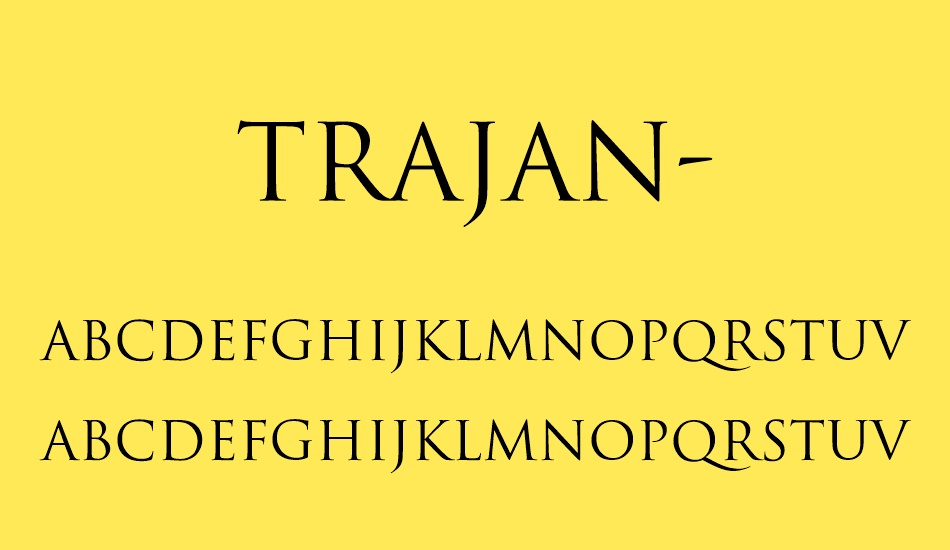
Those painted models then served as guides to cut actual letters into the stone. Historically, the shapes of carved letters were informed by the action of a flat brush used to paint letters on a stone surface. Rough and smooth: Lipton reimagined Canto as companion designs drawn with different tools. Catich’s influential Letters Redrawn from the Trajan Inscription in Rome, published in 1961. When Lipton decided to develop his early drawings into a full-fledged typeface, he returned to his original source of inspiration, Edward M. In more recent times, other interpretations have been limited to capitals and small caps.

Chappell’s lowercase, however, had its origins in the Carolingian minuscule, an unrelated lettering style developed seven centuries later. While Goudy limited his drawings to the capital letters, Warren Chappell did add a lowercase to his 1940 typeface Trajanus, a pen-based interpretation of the Roman imperial capitals.
#Trajan font history full
Other type designers have looked to those iconic character shapes for inspiration and have made them into full alphabets, yet most lack a crucial feature: a lowercase complement. Consider Richard Lipton’s type family his tribute to the unknown craftspeople through the ages who skillfully carved letters in stone, but whose fine and lasting work has largely gone uncredited.Ĭanto’s italics stand on their own and make a strong, independent partner for the roman cuts. Goudy describes the Trajan capitals’ curves as “carefully considered quantities which impart a character to the forms that no mechanical construction can possibly give,” concluding that “the Trajan alphabet, in its spontaneity, is primal.” Yet there are countless other examples of this lettering style. Granted, the letters hailing Emperor Trajan after his victory in the Dacian Wars are widely regarded as some of the finest examples of Roman Imperial capitals. Synchronicity is everywhere.Narrowing Canto’s origins down to the stately inscription found at the base of the Trajan column in Rome would be too reductive. P.S.: I was quite pleased to notice that one of the samples of Myriad Arabic in action was bilingual versions of three poems by Maram al-Massri (with English translation by Khaled al-Mattawa) that had been published by Copper Canyon Press, an excellent international poetry publisher for whom I have done a lot of book design in the past. Not to mention the fraught question of what it means to have an “italic” in either Hebrew or Arabic, neither of which has any such tradition before the digital age.

And about the quixotic and sometimes contradictory nature of designing “sans serif” typefaces in either script. I should be quite clear: I can neither read nor write either Hebrew or Arabic, although I’ve learned quite a lot about the design of typefaces in both scripts.

Mamoun, along with his software-coding daughter Aida, had been expanding my knowledge of Arabic for some time Scott I met through this project, and have been learning from quite happily ever since. The latter pair gave me an excuse to engage the considerable knowledge and expertise of Scott-Martin Kosofsky, a typographer of fine sensibilities and an expert in bilingual Hebrew/English publishing, and Mamoun Sakkal, an expert in Arabic type design with a particular penchant for the style known as square kufic (though this is not, actually, the tradition that the Myriad Arabic extension draws on) and a friend who, happily, lives in the Seattle area. The project gave me an opportunity to delve into the history of the inscription on the Trajan column in Rome (which, almost every time I’ve tried to take a close look at it, was chiuso per restauro and wrapped in a blue plastic tarp), and an even more interesting chance to learn about the design of both Hebrew and Arabic typefaces.

#Trajan font history pro
All of them are additions to existing type families: two derive from Trajan ( Trajan Pro 3, which extends both the number of weights and the language coverage, and the new Trajan Sans) and two from Myriad ( Hebrew and Arabic versions of this widespread humanist sans). Last year I wrote the texts for four new digital specimen books for extensions to Adobe Originals typefaces, and just last week Adobe posted those specimens online.


 0 kommentar(er)
0 kommentar(er)
